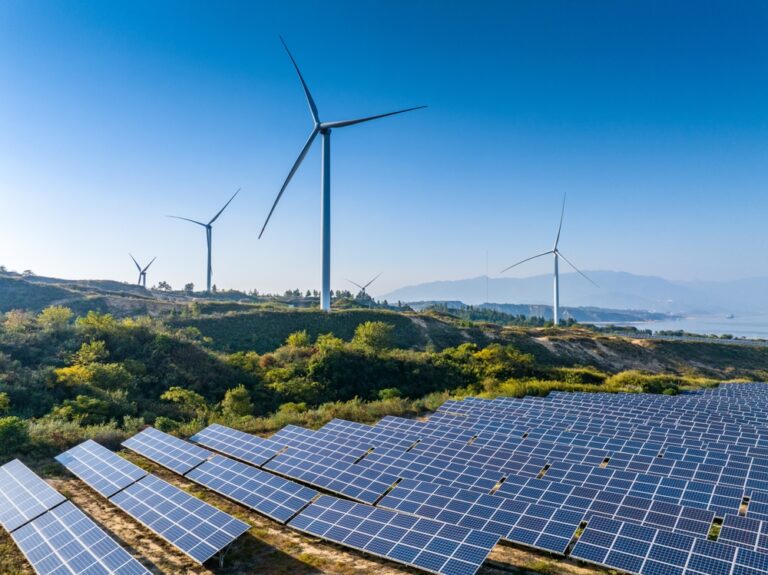executive summary
Indonesia, Southeast Asia’s most populous country, has huge potential for renewable energy development with abundant solar, wind and natural resources. But it has struggled to make meaningful progress and needs to attract more investment to increase its renewable energy capacity.
Indonesia’s renewable energy investments have been stagnant for the past seven years. Latest data shows that Indonesia can only attract about US$1.5 billion in 2023, with only 574 megawatts (MW) of additional renewable energy capacity. Of that, 145 MW will come from the Cirata Floating Solar Project in 2023. Meanwhile, Indonesia’s neighbors are installing significant solar and wind capacity. Vietnam, for example, has 13,035 MW of solar and 6,466 MW of wind capacity, and is recorded to add 1,115 MW of solar and wind capacity in 2023 alone.
The Government of Indonesia (GOI) has issued several regulations to encourage investment in renewable energy projects by the private sector or independent power producers (IPPs) to meet emission targets. However, the attractiveness of investment in renewable energy has been questioned due to slow progress in development, especially in the solar and wind sectors. The government’s latest regulations in 2022 did not achieve the desired outcome of increasing renewables in the energy mix, as investments continued to flow into fossil fuel-based energy sources such as oil and gas. As a result, the GOI feels compelled to reduce its 2030 renewable energy target from 26% of energy supply to 19-21%. Such adjustments call into question the government’s commitment to the renewable energy transition.
Indonesia has committed to an unconditional 31.9% reduction target in greenhouse gas (GHG) emissions and a conditional 43.2% reduction by 2030.2 To meet its 2030 climate pledges, Indonesia needs approximately US$285 billion, with private investment essential to close an estimated US$146 billion investment gap. This report analyzes the current situation and offers recommendations to boost investment in renewable energy. It explores investment opportunities and challenges in Indonesia’s renewable energy sector, focusing on government policies, regulations and implementation processes.
Indonesia has the ingredients to attract more investors in renewable energy projects with growing demand from a population of 270 million, historically strong economic growth and abundant untapped renewable energy sources. However, several regulatory challenges have created uncertainty for potential investors and financiers of renewable energy projects.
- A must-have partner system. The government’s renewable energy asset ownership strategy gives Indonesia’s state-owned electricity utility PT Perusahaan Listrik Negara (PLN) and its subsidiaries control over renewable energy development through a majority shareholder system. This system creates investment challenges as it increases risk for potential investors and negatively impacts their equity returns.
- Restrictions on Transfer of Ownership. While this regulation was put in place to ensure project completion, it has conversely restricted the private sector from acquiring additional capital or technical expertise during project implementation.
- Delivery or payment method. The introduction of the new “deliver or pay” system to replace the “take or pay” system, Penalties will be imposed on the private sector if IPPs fail to meet availability or capacity requirements.
- Renewable energy tariff caps. The new tariff ceiling introduced by the Indian government is considered too low and the competitive direct selection process, in which the lowest bidder is awarded the bid, will lead to even lower and less attractive tariffs.
- Local Content Requirements (LCR). The LCR policy has had the unintended effect of increasing investment costs, making initial system costs significantly higher than the global market average. Low renewable energy tariffs and increasing investment costs have a negative impact on investor returns and make renewable energy investments unaffordable.
- Carbon credit incentives. Carbon credits have value and can be sold within the carbon market to provide an additional source of income for investors, but recent power purchase agreements (PPAs) stipulate that all renewable energy market-based instruments (including carbon credits and renewable energy certificates) will be allocated to PLN, with the result that investors will not be able to benefit from the carbon credits.
- Procurement procedures. Complex renewable energy procurement procedures hinder investment from flowing in. Establishing transparent and clear processes is essential to attract more investment.
Governments need to assess and analyze impediments to potential private investment. Establishing clear and concise procurement procedures and ensuring consistent enforcement of current regulations can provide stability and certainty to potential investors. Governments should also reevaluate mandatory partner schemes, power purchase tariffs, carbon credit incentives and local content requirement policies, which directly impact the financial viability of renewable energy projects. After all, investment return is the most important factor in any financing decision.


